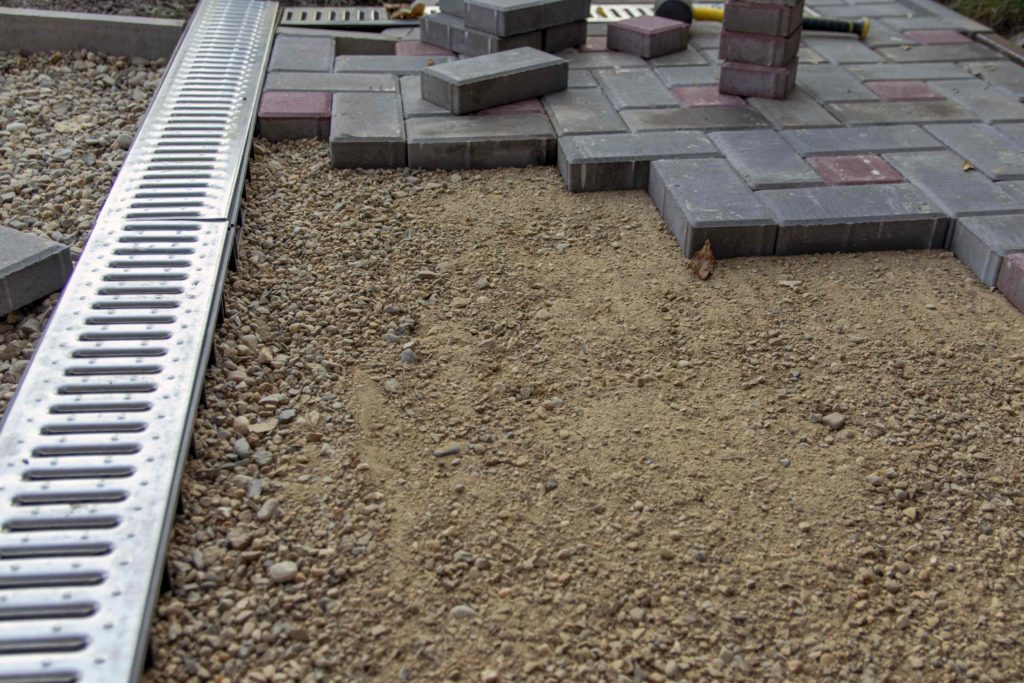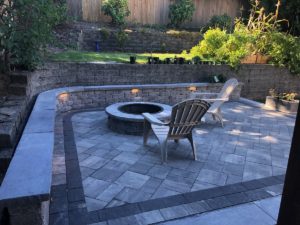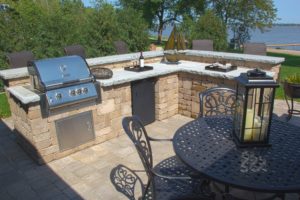
Having a paver patio can be a really stunning landscaping style to embrace, whether you live in the desert or the Pacific Northwest. It’s environmentally friendly and easy to manage (because who doesn’t love a bit of convenience). Paver landscaping also provides a great way to manage water drainage and runoff in various ways.
But, there are a few things to note about water drainage and runoff when you have a paver patio, as a poorly managed runoff and drainage system can lead to damage to the foundations of your home, cause soil erosion, or discolor your beautiful pavers.
So, here are a few things you need to know on how to manage runoff and improve drainage with pavers.
How To Manage Water and Improve Drainage With Pavers
Runoff can be pretty bad for the environment. It’s water that collects and moves through storm drains towards rivers, lakes, and oceans, carrying harmful pollutants. So, managing runoff is particularly important and pavers are a great way to do this.
Equally as bad as runoff, but in a different way, is poorly drained water. Water that collects can cause serious issues for your property. From insect infestations to flooding and damage to your foundation, poorly drained water is not something to take lightly.
Fortunately, there are ways to manage these problems. And here’s how.
Slopes
This is a pretty simple and smart way to manage runoff. If you have a paved driveway, or even along paved walkways and patios, sloped trenches can be dug up and filled with gravel to allow water to drain and run off into. This is great for two reasons.
One, water runs away from the paved area, preventing flooding and water pooling up. This is particularly great because water that collects results in pools around your paved area. It also doesn’t look great as it can result in the growth of algae and discolor your paved area over time.
Reason number two, the slopes prevent excess water from running into drains. Instead, it just goes back into the ground and adds to the groundwater supply.
Additionally, you could look at sloping the paved area at the base. Here, the water will run into the trench or your yard and will never pool or flood.
Lastly, when you’re sloping an area with pavers, you can be slightly creative. For example, you could create steps that slope ever so slightly. Who said something that is functional can’t look great too?
Cracks and Joints
It’s simple science. Water moves in between things and by adding pavers to your landscaping, you’re ensuring there are cracks and joints between them, which allows water to drain through.
One thing to remember though is to allow sufficient space between pavers to allow water drainage. Here it’s important to have a professional working with you. They’ll know how much space to allow without creating too much of a gap between pavers.
There are various creative ways you can include cracks and joints in between your paving. For example, you could have gravel or stones spread in between pavers or slabs, to allow for drainage.
Alternatively, you could plant grass between pavers. That way, water will drain into the ground, naturally irrigating your garden through rainwater drainage.
So, whatever your preferred style is, a paved landscape is definitely a great idea to manage water drainage AND upgrade your outdoor space.
Installing drains
Installing drains is another method to manage the drainage of your garden in an eco-friendly way. A drain can be used as part of a water catchment system to collect rainwater that can be used in other areas of the garden, such as flowerbeds.
It’s perfect if you want to save as much water as possible while maintaining a beautiful garden.
If you don’t have a water catchment system, aren’t too eager to collect rainwater, or don’t have another area of your garden that could benefit from rainwater, you could have the drain send water straight into a pipe that runs away from your property.
No matter how you prefer a drain to be installed and whatever you prefer the function to be, it’s definitely a great way to ensure your paved patio area doesn’t flood or cause damage to your property.
Final Thoughts
Managing water drainage on your property is very important, particularly if you live in a rainy region where flooding and water damage are serious problems. So, it’s vital that you either maintain your current drainage systems or install new ones where old systems are not functioning well or where you don’t have anything at all.
If you’re looking to overhaul your backyard in an eco-friendly and stylish way, paver landscaping is a great way to not only upgrade your backyard but also manage water drainage and runoff.





